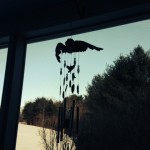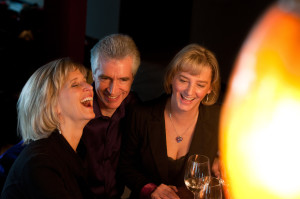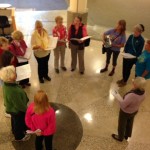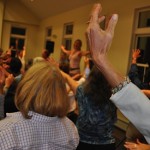I have just spent two weeks on my annual sojourn to Hilo, Hawaii, staying with my cousin, Tracey and her husband, Robert, my home away from home. This year I was struck by how different the sounds of Hawaii are from my home in New Hampshire.
I arrived at dusk, in time for the evening’s coqui chorus. Coqui frogs are small tree frogs, accidentally introduced to Hawaii from Puerto Rico in 1988 that have taken over the trees and airwaves of Hilo. Most sources describe coquis as “a major noise nuisance,” but for two weeks, they were a unique nightly entertainment.
The next morning, I woke to a veritable symphony of birds singing in the dawn. That first day, I was thrilled to hear their fat, melodious, trickling calls, like dozens of bell-trees played in rippling overlap. Their wake-up call is very loud. On subsequent days, I resorted to earplugs.
This is the season when the humpbacks raise their young in the warm waters of Hawaii. Whales are visible nearly every day. Swimming in a picturesque crescent-shaped bay of turquoise water, Tracey showed me how to float on my back with my ears underwater and listen for whales. On several rare occasions, we could have heard the high squealing whistle of humpbacks.
This year, we saw and heard a baby playing with two adult whales. With her nose down, one adult would slam her tail on the surface repeatedly, up to a dozen times in a row, like playing an ocean-sized timpani. Then the baby would do it. Back and forth they played, occasionally alternating with slamming their large side flukes on this resonant water drum. They were far enough away that the resulting sound was delayed from the actual hit. Watching with binoculars, we were mesmerized, wondering what was the purpose of these behaviors. It looked like play and wondrous fun.
One of my last days there, Tracey took me to the largest petroglyph site in Hawaii. A half-mile walk over hot, black-lava rock brought us to an area with over 23,000 petroglyphs. Early Polynesian Hawaiians carved and dug these symbols into the lava bedrock before they had written language.
Animals and humans use their voices to play, communicate, and connect. We are a part of this wondrous environment. These unique sounds of Hawaii remind me of a song that I am rehearsing with Songweavers. From the Paul Winter Consort, we sing:
Voices are calling round the earth.
Music is rising in the sea…
In a circle of friends, in a circle of sound.
All our voices will blend, when we touch Common Ground.











